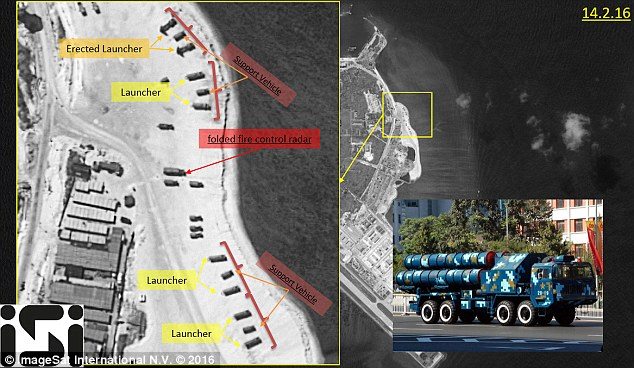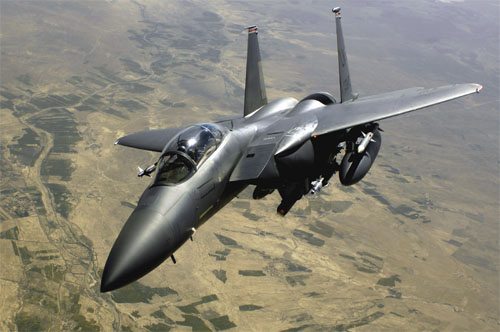One of the greatest threats facing the world today is the increasing proliferation of ballistic missiles and weapons of mass destruction. Non-proliferation activities, to include diplomacy and arms control agreements with Russia, have been successful in reducing this threat.
Despite reductions in the number of weapons deployed by the United States and the former Soviet Union, ballistic missile proliferation continues on a wide scale today and could increase as the technology is transferred. Countries make these investments because ballistic missiles provide them with the means to project power both in a regional and strategic context and a capability to launch an attack from a distance. A country with no ballistic missiles today may acquire them in a very short period of time, and these missiles could become available to non-state terrorist groups.
Through its capabilities for defending critical nodes, military assets, and seats of government, missile defense enhances non-proliferation activities. In other words, missile defenses can provide a permanent presence in a region and discourage adversaries from believing they can use ballistic missiles to coerce or intimidate the U.S. or its allies. In times of crisis, we can surge mobile missile defense capabilities (Aegis BMD, for example) into a region to enhance deterrence and, if a missile is launched, improve protection of critical assets and limit damage over a wide area. The ultimate goal of missile defense is to convince countries that ballistic missiles are not militarily useful or a worthy investment and place doubt in the minds of potential aggressors that a ballistic missile attack against the United States or its allies can succeed.
Missile defense technology being developed, tested and deployed by the United States is designed to counter ballistic missiles of all ranges—short, medium, intermediate and long. Since ballistic missiles have different ranges, speeds, size and performance characteristics, the Ballistic Missile Defense System is an integrated, ‘layered” architecture that provides multiple opportunities to destroy missiles and their warheads before they can reach their targets.
The system’s architecture includes:
- networked sensors and ground- and sea-based radars for target detection and tracking
- ground- and sea-based interceptor missiles for destroying a ballistic missile using either the force of a direct collision, called “hit to kill” technology, or an explosive blast fragmentation warhead
- a command and control, battle management, and communications network providing the warfighter with the needed links among the sensors and interceptor missiles
Missile defense elements are operated by United States military personnel from U.S. Strategic Command, U.S. Northern Command, U.S. Pacific Command, U.S. Forces Japan, U.S. European Command and others. The United States has missile defense cooperative programs with a number of allies, including United Kingdom, Japan, Australia, Israel, Denmark, Germany, Netherlands, Czech Republic, Poland, Italy and many others. The Missile Defense Agency also actively participates in NATO activities to maximize opportunities to develop an integrated NATO ballistic missile defense capability.
Ballistic missiles follow a three-phased trajectory path: boost phase, midcourse phase, and terminal phase.
Boost Phase
The boost phase defenses can defeat ballistic missiles of all ranges including Intercontinental Ballistic Missiles (ICBMs), but it is the most difficult phase in which to engage a missile, because the intercept “window” is only from one to five minutes. Although the missile is easiest to detect and track in the boost phase because its exhaust is bright and hot, missile defense interceptors and sensors must be in close proximity to the missile launch. Early detection in the boost phase allows for a rapid response and 09-FS-0001 01/2009 intercept early in its flight. Because the enemy missile is far away from its target and countermeasures have yet to be deployed, boost is the most desirable phase in which to engage. Currently, the Airborne Laser and the Kinetic Energy Interceptor technologies are in development to provide a defense in the boost phase. Both programs have critical development milestones in FY 2009 to prove technical feasibility.
Midcourse Phase
The midcourse phase begins when the enemy missile’s booster burns out and it begins coasting in space towards its target. This phase can last as long as 20 minutes, allowing several opportunities to destroy the incoming ballistic missile outside the earth’s atmosphere. Any debris remaining after the intercept will burn up as it enters the atmosphere. The Ground-based Midcourse Defense element is now deployed in Alaska and California to defend the U.S. homeland against a limited attack from countries like North Korea and Iran and is also being developed for deployment in Europe to defend against an attack from Iran. This system can only defend against intermediate and long-range ballistic missiles. The Aegis sea-based missile defense element utilizes existing Aegis cruisers and destroyers armed with interceptor missiles designed to defend against short- to medium-range ballistic missiles. A network of advanced sensors, radars and command, control and communication components provide target detection, tracking and discrimination of countermeasures to assist the interceptor missile in placing itself in the path of the hostile missile, destroying with hit-to-kill technology. These sensors and radars include transportable X-band radars capable of going to wherever they are needed, as well as advanced radars aboard Aegis cruisers and destroyers capable of operating in the world’s oceans. We have also built the largest X-band radar in the world, the Sea-based X-band, which is mounted on a floating platform allowing it to traverse the world’s oceans. This radar provides precise tracking of target missiles of all ranges and discriminates between actual missiles and countermeasures that could be deployed with a hostile missile.
Terminal Phase
The terminal phase is very short and begins once the missile reenters the atmosphere. It is the last opportunity to make an intercept before the warhead reaches its target. Intercepting a warhead during this phase is difficult and the least desirable of the three because there is little margin for error and the intercept will occur close to the intended target. Terminal phase interceptor elements include the Theater High Altitude Area Defense (THAAD) now undergoing advanced flight testing, the Aegis BMD nearterm Sea-Based Terminal Defense capability using the SM-2 Block IV missile, and the U.S. Army’s PATRIOT Advanced Capability 3 (PAC-3) now deployed worldwide. These mobile systems defend against short- to medium-range missiles.
Fielded Capabilities
From its establishment in early 2002 through the end of 2009, the Missile Defense Agency is fielding a Ballistic Missile Defense System consisting of:
- 28 Ground-Based Interceptors
- 21 Aegis warships capable of long-range surveillance and tracking and missile intercepts
- Standard Missile-3 interceptors for Aegis Ballistic Missile Defense warships
- An upgraded Cobra Dane radar in the Aleutian Islands
- Three upgraded early warning radars (Beale Air Force Base, California, Fylingdales, U.K., and Thule, Greenland)
- Four transportable X-band radars, with one currently deployed to Japan
- A sea-based X-band radar now operating in the Pacific Ocean to support flight testing and actual defensive operations
Testing
Testing must account for the ever-changing ballistic missile threat and the latest technological developments. Ground and flight tests provide data needed for highly advanced modeling and simulation activities that allow us to measure and predict the performance of all missile defense technologies. Successful flight tests in particular give the warfighter greater confidence in the system’s capabilities. Since 2001, the Missile Defense Agency has conducted 47 hit-to-kill flight tests resulting in 37 intercepts.









